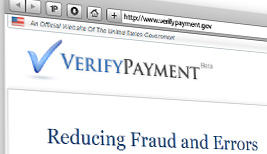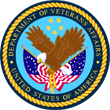Success Stories
The Administration recognizes that agencies need to do more with less, and Federal resources must be managed properly. One way to do this is to eliminate wasteful spending. The President has taken several important steps to reduce improper payments.
 |
On June 18, 2010, the President issued a memorandum directing that a “Do Not Pay List” be established as a single source through which federal agencies can check the status of a potential recipient before making a payment or award. In response to the President’s directive, we have created VerifyPayment.gov, which checks multiple databases through a single portal and helps federal agencies determine whether a payment should be made before it goes out. VerifyPayment.gov serves as the public online presence of the “Do Not Pay List,” but the database cross-checking tool is primarily geared towards federal personnel. Therefore the tool will be available in a secure, password-protected environment accessible only to government employees who need the information to perform their job. The Department of Veterans Affairs (VA) will pilot this improper payments prevention tool, and certain VA employees will begin using the tool in January 2011. We anticipate expanding this tool to other federal agencies over the coming months as well. |  |
 |
In response to the President’s directive
to recapture more improper payments, federal agencies recovered a record
amount of approximately $687 million in FY 2010. This total includes
approximately $611 million recaptured through agency payment recapture
audits—a significant increase from previous years, and the highest
reported amount in the six previous years of agency reporting.
The $687 million recaptured in FY 2010 puts us on track to achieve the Administration’s goal of recapturing at least $2 billion between 2010 and 2012. The Administration is very focused on reducing and recapturing improper payments, and will continue its efforts to improve the government’s financial performance. |
 |
 |
The Department of Housing and Urban Development (HUD) has achieved a 73 percent reduction in the level of improper payments since 2002—from $3.430 billion to $924.5 million. HUD’s improper payment rate for fiscal year 2010 was maintained at the historically-low rate of 3.1 percent. HUD achieved these results through the use of sophisticated data matching solutions that help confirm recipient eligibility. |  |
 |
The Social Security Administration (SSA), in partnership with financial institutions, has deployed an electronic process that identifies undisclosed bank accounts and verifies bank account balances with financial institutions for purposes of determining eligibility and benefit amount in the Supplemental Security Income (SSI) program. The Access to Financial Institutions (AFI) initiative is operating in three states, New York, New Jersey, and California, which represent 28 percent of SSI recipients. SSA awarded a contract in June 2010 that will enable it to expand AFI to 14 additional states in fiscal year 2010. Together with California, New York, and New Jersey, these 17 states comprise about 65 percent of SSI recipients. This contract will also allow SSA to increase use of the process from 15,000 to 35,000 transactions per month by September 30, 2010. Early estimates showed roughly $10 in Federal lifetime benefit savings for every $1 spent on the AFI process. SSA expects to achieve over $100 million in lifetime program savings from AFI activity in FY 2011, and up to $1 billion in lifetime program savings from each year of AFI activity once SSA rolls out AFI nationally. |  |
 |
Veteran’s Affairs (VA) Financial Service Center Project Health Care Effectiveness through Resource Optimization Audit “Project HERO” is a pilot program to establish a contracted network of healthcare providers in four Veterans Integrated Service Networks (VISN) for veterans to receive authorized medical and dental care. The Project HERO audits have been performed for 8 months. They re-adjudicate 100 percent of the Project HERO claims against the negotiated provider fee schedules and provide the Veterans Health Administration’s (VHA) Central Business Office with reports of discrepancies. VHA uses these reports to correct provider billings and collect over-payments. The VA Financial Service Center identified approximately 13% ($11.6 million of potential erroneous payments) of the claims from the contracted networks that require review by the Central Business Office. |  |
 |
The Department of Defense (DoD) has prevented approximately $2.3 billion in improper payments to vendors since August 2008 through the deployment of their Business Activity Monitoring (BAM) tool. BAM is an analytical tool that assists DoD in flagging potential improper payment transactions for closer review before they are completed and the money is spent. |  |






